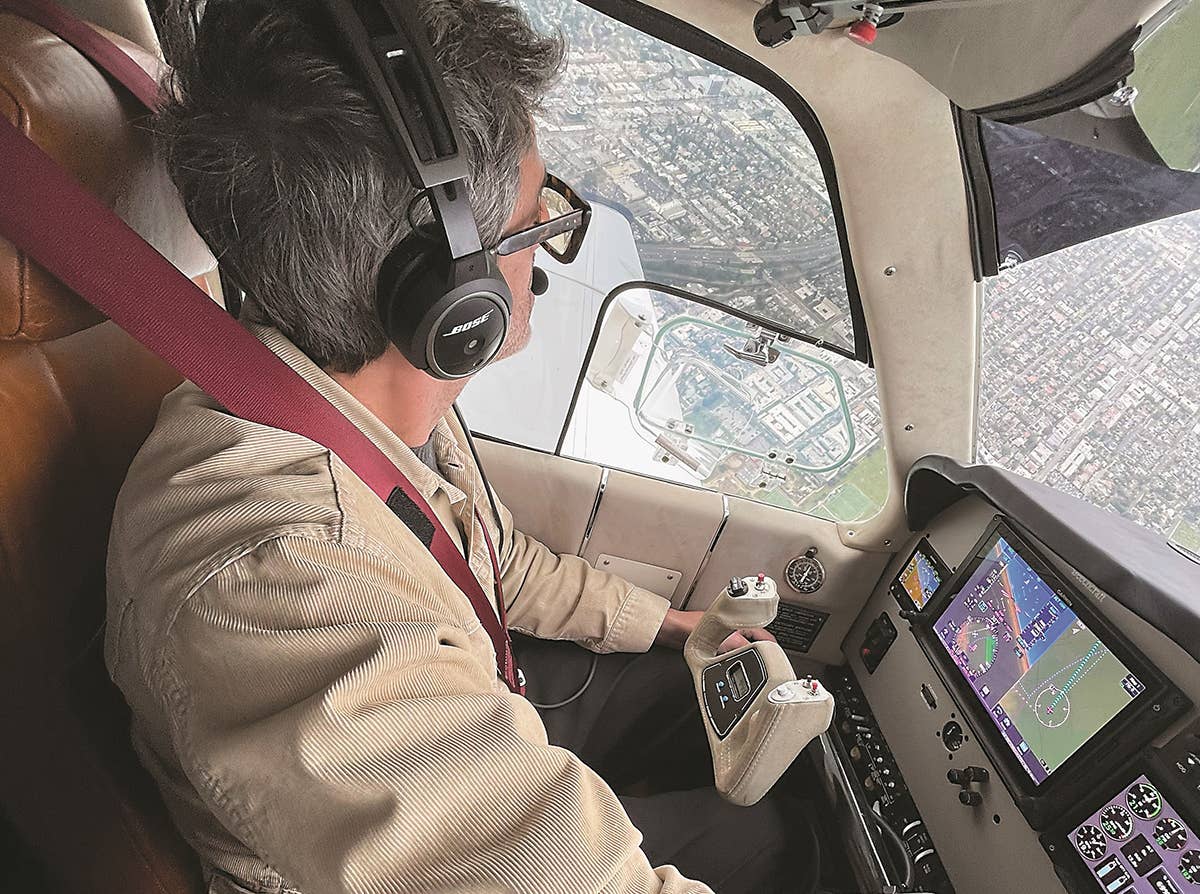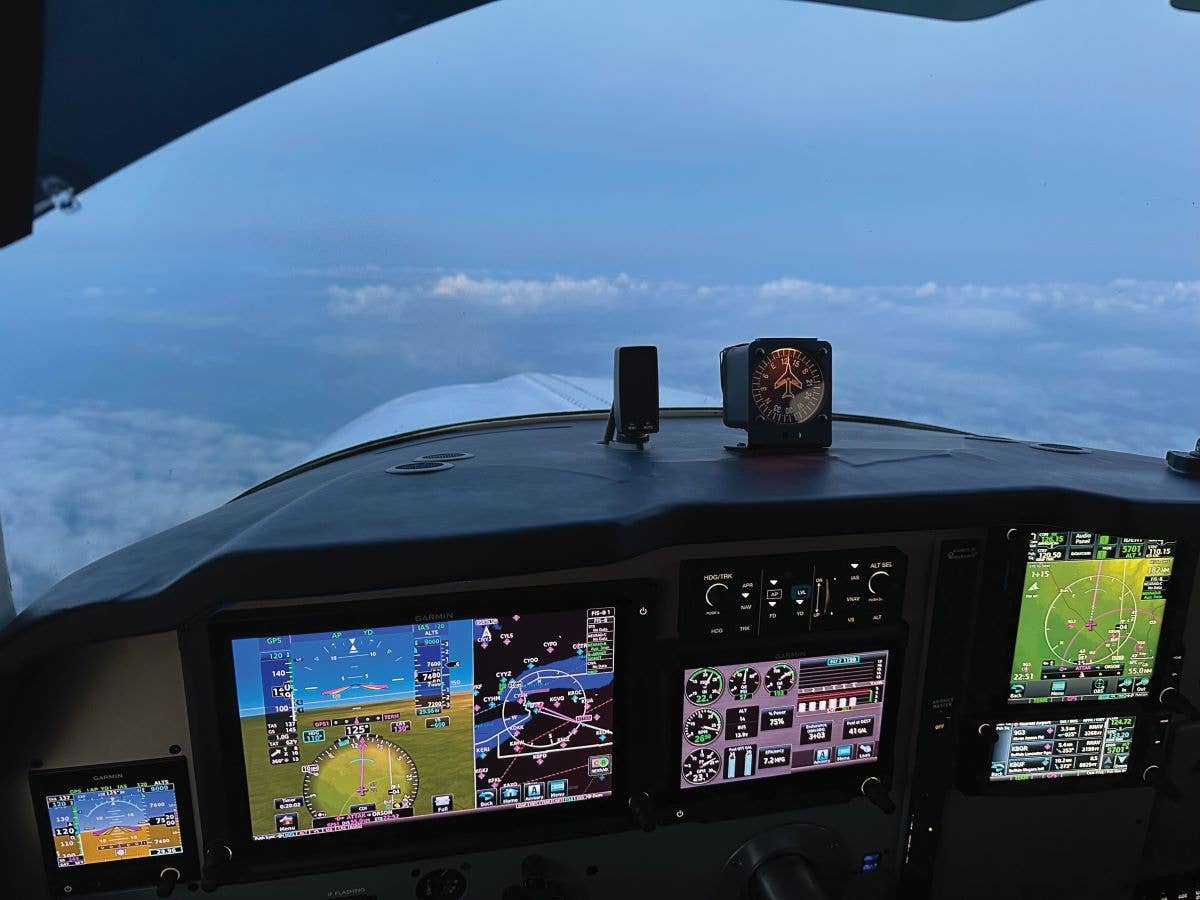Misses, Near and Far…
Human beings are prone to errors. Our training has tried to make us aware of these limitations, but we are as complicated as we are flawed.

[Courtesy: Ben Younger]
“November 1750 Whiskey, copy this number down and call when on the ground. Possible pilot deviation.”
Yup. The dreaded words, and just a couple of weeks before the 10-year anniversary of getting my private certificate. It happened earlier this year, departing VanNuys (KVNY) in California.
If you're not already a subscriber, what are you waiting for? Subscribe today to get the issue as soon as it is released in either Print or Digital formats.
Subscribe NowBelow is an excerpt from my ASRS report:
[My] first time departing KVNY, and I was given the CANOGA 3 departure. I misread the chart for my given runway and believed the initial turn was a climbing left toa 253 heading. It was a climbing right turn to 213. I had a feeling something was off while still on the ground and asked tower to confirm my climbing left turn to 253. I was told, “affirmative.”
This calmed me, and I was given a takeoff clearance on [Runway] 16R (16L utilizes the climbing left turn). I was immediately handed off to SoCal approach and seeing that the left turn took me over the parallel runway, I asked again if my left turn was the correct one. The controller told me it was incorrect and had me turn back to the right. There was no other traffic around, but the controller gave me a number to call.
It’s fairly obvious what happened here, what I should have done and will do to remedy the mistake moving forward, so I’ll spare you the mea culpa. What I’d like to talk about is how it snuck past both myself and the tower controller. How did I misinterpret the chart, and how did he not catch my blunder when asked? The answer is age-old: Human beings are highly prone to errors.
To hammer the point home: there have been no less than three major incidents at JFK, Boston Logan, and Austin in as many months. These all involved professional pilots flying big iron. All three have human error at their core.
The January 13 event at KJFK involved two airliners. An American Boeing 777 crossed the wrong runway, and an already-departing Delta Boeing 737 had to haul on the brakes to keep from plowing into the taxiing 777. This could have been a major catastrophe with hundreds of casualties. The controller caught it in time, but he could just as easily have taken a sip of coffee and missed it. In my view, the American pilots appear to be at blame. What was happening in the cockpit at the time? Idle chit-chat? Fatigue? Clearly a distraction of some sort.
In Boston on February 27, a Learjet took off after being given, and even reading back correctly, an instruction to line up and wait. That is an error only a human could make. The approaching JetBlue captain saw the Lear and went around. They came within 530 feet of one another. Reading back instructions correctly, then doing something else entirely, illustrates the highest level of distraction. Was it internal or external in its inception?
The Austin incident on February 4 seems to be an air traffic controller error in which two aircraft were cleared for the same runway. A FedEx Boeing 767attempted to land while a Southwest 737 prepared for takeoff. The FedEx pilot abruptly pulled up as the Southwest 737 had already taken the runway. The 767 descended to just 150 feet before initiating the go-around. Close calls, all of them.
We humans are flawed machines. Full stop. Our training has tried to make us aware of these limitations, but we are as complicated as we are flawed. All that stuff we learned in class about fatigue and mental state seemed so silly to me at the time. I breezed past it like a driver’s ed remedial course after getting a speeding ticket. Who really stops themselves before a flight and goes through the I’M SAFE checklist? If you do, congrats. The rest of you can read on.
I have never done it and doubt I ever will. If I’m heading to the airport, I’ve already made a decision about my well-being and ability. It may not be a great decision, but it’s a decision nonetheless. Goingthrough that checklist before you leave the house makes more sense, but who is doing that in their living room?
Let’s speak plainly here. Unless something is obviously wrong with your physical or mental state, you aren’t going to be running through that check-list. And if something is substantive enough to grab your attention, then you don’t need the list to begin with. The hard part is admitting/recognizing something creeping up on you—not noticing something that already has your attention. Using my example, I was sitting on a taxiway, having just flown in congested airspace in IMC. The airports I was flying between are all within minutes of one another and are all in Class D and C airspace, with Class B right above them. I was about as busy as I’ll ever be in an airplane without introducing some sort of emergency. It was tiring and gratifying.
I flew a SID departing Burbank and was in the clouds in no time. Next, an RNAV approach into Camarillo where I flew the missed and went right back into the clouds. I then flew a new-to-me ILS into Van Nuys. I was tired. Not so tired that I would call off a flight back to the airplane’s home in Burbank, seven nautical miles away.
So, what then? What should have happened? It’s about noticing the slightly different feeling I had sitting on the taxiway. I wasn’t exhausted, but I was fatigued. Had I used the I’M SAFE checklist, I would have breezed right through all six criteria. What happened is more nuanced than that. It’s more akin to noticing a vibration coming from up front. I’m tuned into my engine at all times when it’s running. My sensitivity to any change in that Continental feels super-human. I feel like I can detect variations in its operation that even a mechanical instrument could not. My passengers never notice the slight frequency changes I am describing. To me, they feel/sound like fog horns at close range.
In this example, that “engine vibration” was me asking the tower to confirm the direction of flight on a departure procedure. The red flag should have waved right there. That is simply not a question I should have been asking. That is a vibration that should have made me check my body’s engine monitor, followed immediately by the chart for the CANOGA 3 departure.
What were the pilots and the controller in those other incidents feeling or thinking in those moments just before their decisions were made? Could it have been confirmation bias, or expectation bias? Marital issues? A slight cold? Only they can tell us, and it’s fully possible that any one, or all, of them weren’t even feeling off in the slightest. Sometimes we just make mistakes apropos of nothing. At times we just fumble the ball.
I spoke to ATC when I landed. The gentleman was from New York, and his accent made me feel like things would be okay. They checked the tapes, and I was cleared of any penalty or wrongdoing, but I still filled out the ASRS report. Felt like penance. Reprimanded or not, I made a mistake, and I’d very much like not to do it again.
This article was originally published in the May 2023 Issue 937 of FLYING.

Subscribe to Our Newsletter
Get the latest FLYING stories delivered directly to your inbox







